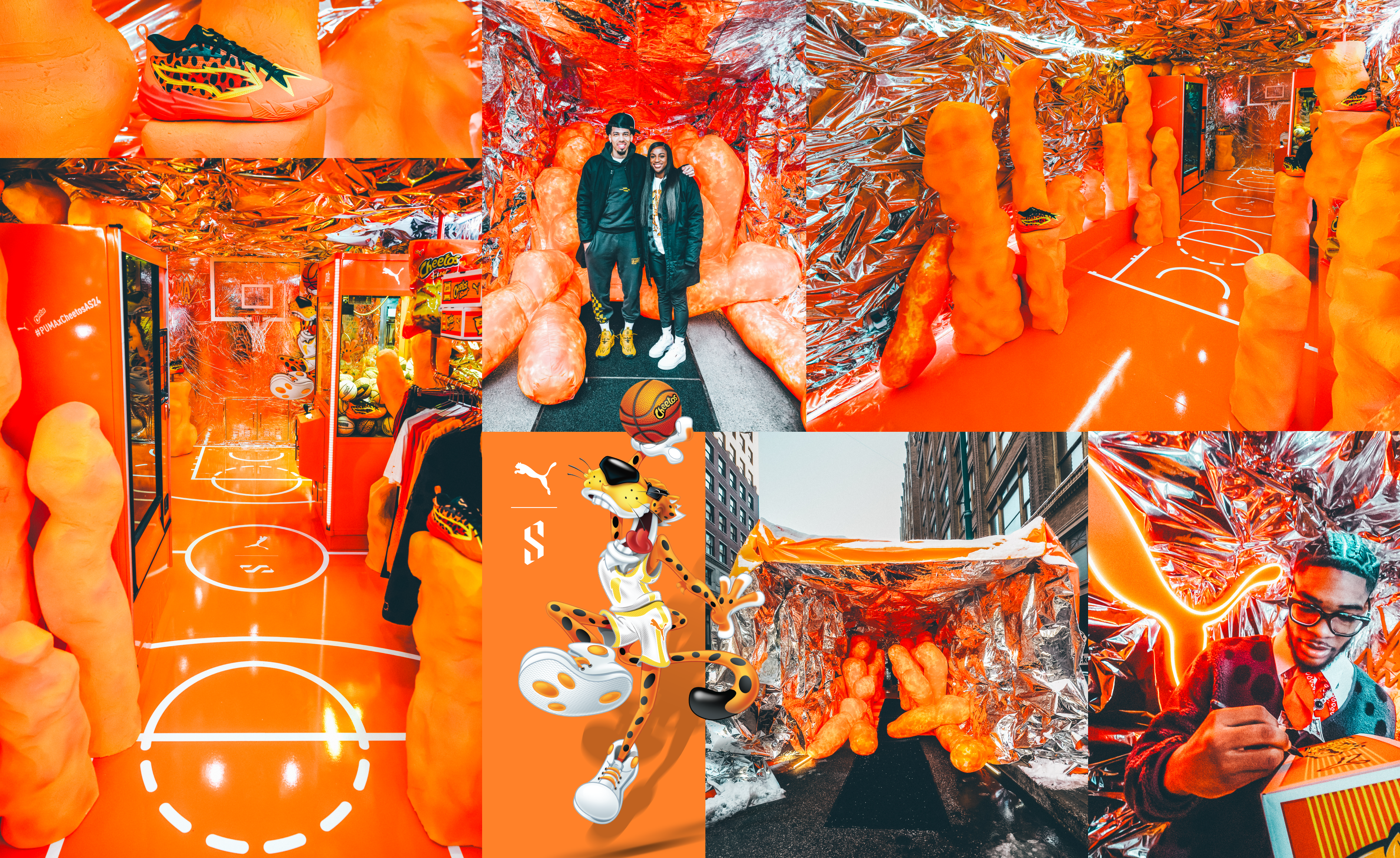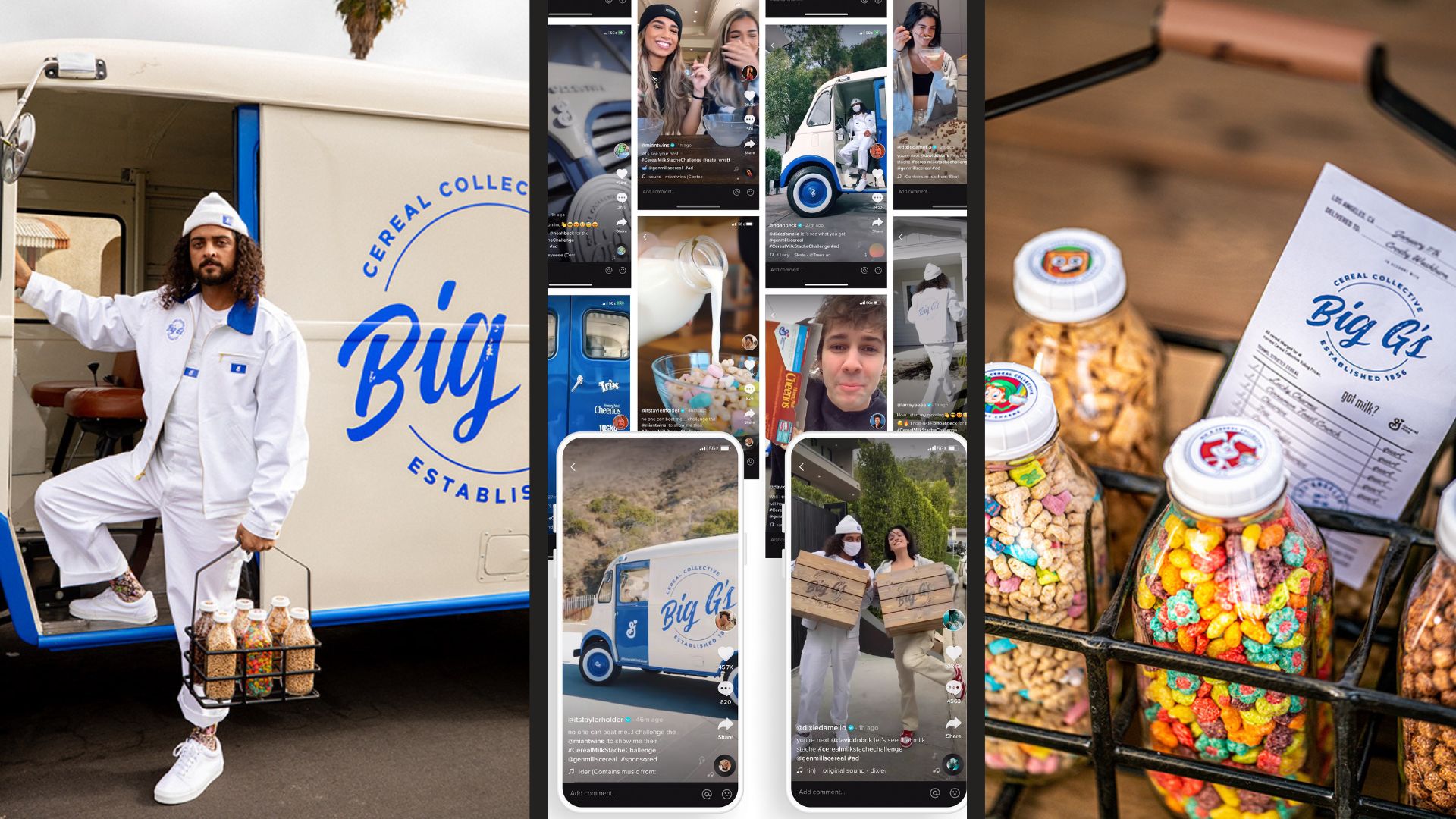Brand Experiences
Finding the Perfect Match: A Step-By-Step Guide to Brand Collab Chemistry
By Rosie Tobyn

At their most elemental, brand collaborations involve two entities coming together to create a unified initiative. But that’s just the tip of the iceberg…
Have you ever spotted a brand collaboration and been struck by the pairing’s effortless and complementary nature? Or similarly, their opposite identities coming together to create the wacky and wonderful?
Whether it’s a joint promotional drive, innovative offering, or immersive consumer journey, the best collaborations have carefully considered each brand’s core values, service offering, consumer base and identity, as the campaign is expertly delivered to achieve mutual benefits and goals.
That sort of synergy doesn’t just happen.
Today, it’s clear the power that dynamic collaborations bring to brands and we’re seeing this from a diverse range of industries – from food & drink to cosmetics to automotive.
And with few exceptions, successful brand collaborations aren’t just happy accidents.
It takes tremendous behind-the-scenes effort to develop a winning brand collaboration.
In this article we will explore a range of planning and analysis methodologies, real-world examples, and ways that technology and agency partners can take brand partnerships to the next level.
Step One: State Your Objectives
Planning and brand analysis are foundational activities paramount to achieving your campaign objectives. Whether a campaign succeeds or fails is often determined in its most nascent moments.
Start with the end in mind. Narrow down your goals and envision the outcome of the campaign. Among the objectives your brand may seek to achieve through tactical alliances are:
• New and existing market expansion
• Attracting new consumer groups
• Amplifying brand identity and messaging
• Greater social media / channel exposure and brand recognition
• Brand elevation
• Field testing unique and experimental products or experiences
• Boosted sales
Understanding your main goal and possible bi-product successes can help to remain focused as you search for a collaboration partner. Additionally, it can help to illuminate the metrics and measurement strategies you will need to track ROI and chart the success of your efforts.
Step Two: Look Inward
Now you know your objectives, it’s time to think closer to home. Before finding the perfect brand to partner with, a self-analysis is critical to identify the types of brands you will mesh with. Use the below questions to map out your brand identity:
• What is your mission, vision, and values?
• Who are your customers and what do they value?
• What markets are you currently operating in?
• What makes you unique?
• What are your strengths and weaknesses?
• What brands do you admire and why?
Ground your collaboration with a well-rounded understanding of your brand identity, strengths, weaknesses, and offering. This will make your brand more attractive to other brands also on the look-out for collaborators.
Because self-analysis is a challenge for all brands, this leg of research will be more successful with subject matter expertise from a brand strategist. If you do not have this resource internally, partnering with an agency like SGK for this skillset would be a worthy investment to reach your objectives.
Step 3: Determine your collab’s ‘through line’.
What makes brands ‘click’? Communicating the theme or purpose for the alliance is key to getting the emotional buy-in from consumers. Some common themes include:
• Cultural connectivity
• Contrast
• Nostalgia
• Cause marketing
• Influencer
• Purpose/Identity-driven
Let’s delve into some examples of differing themes and why they worked.
Cultural Connectivity
In SGK’s premier engagement with basketball shoe and apparel brand PUMA Hoops, an unlikely partnership was forged between Scoot Henderson, Footlocker, Puma and Cheetos in anticipation of the 2024 NBA All-Star weekend.
The campaign objective was to amplify excitement ahead of the launch of their newest shoe – the ‘Hoops x Cheetos Scoot Zeros’. Not long after, the collaboration was shaken up by a fifth collaborator, Porsche.
Using Scoot’s motto “Overly determined to dominate” as the vision of this campaign, the concept grew from a shoe launch to a multi-branded experiment and sensory experience. Uniting disparate brand personalities and industries to connect through the shared culture and community of basketball, the activation bringing this to life involved bouncing, giant, inflatable Cheetos (go big or go home!), a claw machine stuffed with prizes, and an underground Porsche High Octane Racetrack (a nod to Indianapolis’ high-octane heritage) all within a Footlocker store premiering the shoe line.
Aside from painting Indianapolis orange, the campaign elicited a huge reaction including 1 billion brand impressions and 185 global editorial placements. Puma’s Scoot Zeros launch rocketed to success as an instant sell-out.

Nostalgic Connections & Influencer Marketing
The 1993 ‘Got milk?’ campaign is one of America’s most successful to promote the consumption of cow’s milk, creating a ‘pop culture’ phenomenon that featured a range of influential celebrities sporting a milk moustache to raise awareness.
In a new bid to promote the nutritional benefits children and adults can gain from having milk and cereal as breakfast, General Mills teamed up with SGK to create billboard assets of cereal brand characters and milk moustaches. This evolved into how General Mills could grow their audience and uniquely connect with them through engaging moments versus traditional advertising.
SGK took the nostalgic American milkman persona and transported him into 2021. Instead of delivering milk, the concept was flipped to cereal delivery, thereby creating the demand for milk. Our original ‘Big G’ brand and ‘The cereal man’ activation involved the creation of content, logo, a uniform for the milkman, a video and engaged influencers from social media channels such as Instagram and TikTok. The influencer kits of milk and cereal took nostalgic inspirations (glass milk bottles, old-fashioned milk crates and personalised order slips) and were personally delivered to influencers across Los Angeles.
By reflecting a nostalgic cultural experience, the brand was propelled to achieve outstanding reach via community-driven content. Ultimately, the campaign reached 74 million views and interactions, operationalised within just 10 weeks.

Cause Marketing
Cause marketing refers to joining together with a charity or cause based upon mutual shared values and/or humanitarian objectives to evoke an emotive response from the market.
One such example is Network Rail, a public body which owns, operates, and maintains the railway in England, Scotland, and Wales. Its team partnered with suicide prevention charity Samaritans to reduce the number of rail suicides in the UK, equating to the value of £1m per year in donations and training.
Contrasting Industries & Identities
This involves collaboratively creating a product or a service that speaks to your varied and different audiences by bringing them together through shared appreciation. Ideally, these will have complementary aspects, where goods or services fit like puzzle pieces, or triggering exclusive and limited-time offerings destined to appeal to your shared consumer base.
While cross-industry or cross-identity brands could be seen as higher risk campaigns, key considerations addressed within the project’s preparatory phases can mitigate this perceived risk. To this end, I recommend integrating what’s current, such as TikTok trends, and utilising head-turning activations, all the while demonstrating your understanding of your customer base(s) and what will appeal to them. Using data and trend analyses will validate your objective and vision.
Key Takeaways
For any brand looking to create a collaborative brand campaign, it’s vital to ensure all upfront planning, analysis and research techniques are used to identify the perfect partner.
SGK clients leverage our expansive network of creative, production, and technological expertise. Fresh investments into cutting-edge content, packaging automation software and other technologies will also further enhance support to our clients, helping pioneer innovative solutions and satisfy rapidly growing consumer demand for a range of content.
This includes the use of AI, which delivers unparalleled market insights and predictive data, constituting a revolutionary method helping to reinforce or repudiate gut-level assessments and even lead to insights-driven match selection.
From a creative lens, the opportunity that AI brings to these campaigns in terms of creating visuals, characters and environments that can be fully unique bringing innovation to the design process of any brand collaboration.
At SGK we are moment makers, we believe moments matter. They evoke emotion, inspire action, and make an impact that moves people. It’s our passion for these experiences that motivate us to create unique, engaging, memorable connections wherever and whenever consumers and brands intersect.